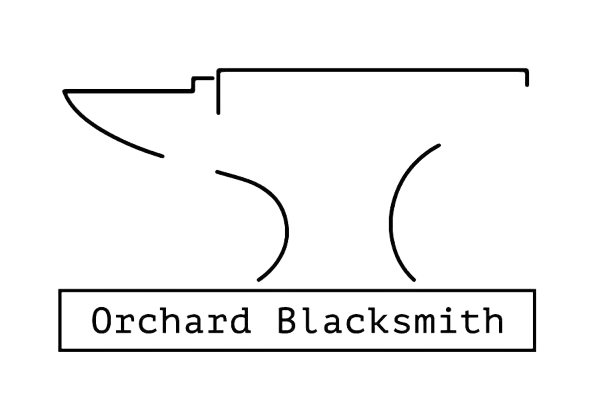What the Forge Sounds Can Teach You About Metalworking
Step into a working forge, and you’ll notice something immediately: the sound.
Not just the roar of fire or the rhythmic clang of hammer on steel — but a language of its own. Blacksmiths know that listening isn’t just part of the atmosphere — it’s an essential skill. The forge speaks, and with time, the trained ear learns to understand what it's saying.
In this post, we’ll explore how the sounds of the forge guide your hand, alert you to mistakes, and help refine your craft.
The Roar of the Forge
Before the first hammer blow lands, the forge itself is already talking. Whether you're using coal, charcoal, or propane, the sound of the fire tells you how it's burning.
A steady, even roar from a propane forge indicates proper airflow and a consistent burn.
A sputtering or pulsing noise could mean a blockage, low fuel pressure, or improper mixture.
In a coal forge, a crackling fire with a dull rumble means your fuel is burning right. If you hear it gasping or whistling, your airflow may be too strong.
Listening helps you catch small issues early — before they affect heat, efficiency, or safety.
The Ring of the Hammer
The hammer strike isn’t just about power — it’s about precision, rhythm, and tone.
When hot metal is struck, it has a duller, softer ring. That’s when it’s most workable.
As the metal cools, the sound sharpens — a sign it’s time to return it to the fire.
If a hammer strike sounds hollow or uneven, it may indicate:
Inconsistent contact
A poorly aligned blow
Internal flaws in the steel
Experienced smiths listen to the feel and sound of the hammer blow. The tone changes with each stage of the process, giving you real-time feedback without needing to second-guess the temperature by eye alone.
The Hiss of the Quench
There’s nothing quite like the hiss of hot steel hitting water or oil — a dramatic punctuation mark to the forging process. But not all hisses are the same.
A brief, high-pitched hiss usually means the steel was at the right temperature for quenching.
A violent, loud hiss or steam explosion could signal overheating — risking cracks or warping.
No hiss at all? You may have quenched too soon.
For different steels and quenching mediums, these sounds vary — but a smith who listens carefully learns to identify when something isn’t right.
The Voice of the Anvil
Your anvil has a voice too. It tells you about your hammer technique, your material, and sometimes, even your tools.
A clear, bright ring often indicates a clean strike and good anvil rebound.
A dead thud might mean the metal is cold, your hammer angle is off, or you’re striking too far from the sweet spot.
Some smiths use the pitch of the ring to evaluate whether their anvil is properly mounted or whether there's vibration in the stand.
Even the echo of a missed blow can teach you something — often, that your focus has slipped.
Training Your Ear: Tips for Listening Better
Learning to listen to metal takes time — but it’s one of the most underrated ways to level up as a blacksmith.
Forge in silence sometimes It sharpens your awareness. You’ll be surprised what you notice when you’re not drowning it in music or podcasts.
Work slowly and deliberately Pay attention to how sound changes with temperature, tool use, and steel type.
Record yourself Sometimes listening to a video of your forging session reveals patterns or problems you missed in the moment.
Mastery Through Sound
Master blacksmiths don’t just watch the steel — they listen to it. Over time, sound becomes a kind of sixth sense: an intuitive guide that helps you know when to hit, when to stop, and when to try again
If you would like to discuss a potential project, please do not hesitate to contact us!
